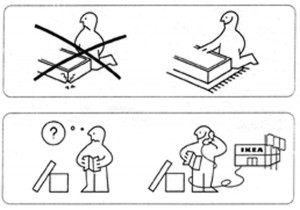
Assistant Professor of Marketing Daniel Mochon says consumers tend to value self-made products mroe than similar professionally assembled products.
So it turns out there’s a reason why you could never throw out that wobbly old bookcase you put together in college. It’s the Ikea effect.
In a new article in the Journal of Consumer Psychology, the Freeman School’s Daniel Mochon argues that consumers tend to value products they build themselves— such as furniture from Ikea—more than similar professionally built products.
“Usually when people think of building their own furniture, they think it’s sort of foisting cost onto the consumer and therefore it reduces value,” explains Mochon, assistant professor of marketing. “But what we find is that people actually come to love the things they have created.”
 In a series of experiments, Mochon and co-authors Michael I. Norton and Dan Ariely asked subjects to build simple items—such as Ikea storage boxes or origami figures— and then compared their willingness to pay for those items to their willingness to pay for similar pre-assembled products. Surprisingly, participants were routinely willing to pay more for the items they put together than for the professionally assembled items.
In a series of experiments, Mochon and co-authors Michael I. Norton and Dan Ariely asked subjects to build simple items—such as Ikea storage boxes or origami figures— and then compared their willingness to pay for those items to their willingness to pay for similar pre-assembled products. Surprisingly, participants were routinely willing to pay more for the items they put together than for the professionally assembled items.
Mochon attributes the phenomenon to what psychologists refer to as the need for effectance.
“People just have a fundamental need to feel like they can intervene in the world,” says Mochon. “By creating stuff, they have a way to signal to themselves and others that they can intervene. I think that’s why people love do-it-yourself projects so much. It’s a way to show you have control over the world.”
The researchers’ findings also help to explain the popularity of sites like YouTube, which rely on user-generated content. Mochon says users get the same kind of satisfaction from uploading a self-made video that they get from assembling an Ikea bookshelf.
“People love their own videos,” says Mochon, who teaches a course on social media marketing at the Freeman School. “They see that badly focused video of their cat jumping on a sofa bed as the most amazing thing in the world because they created it themselves.”

